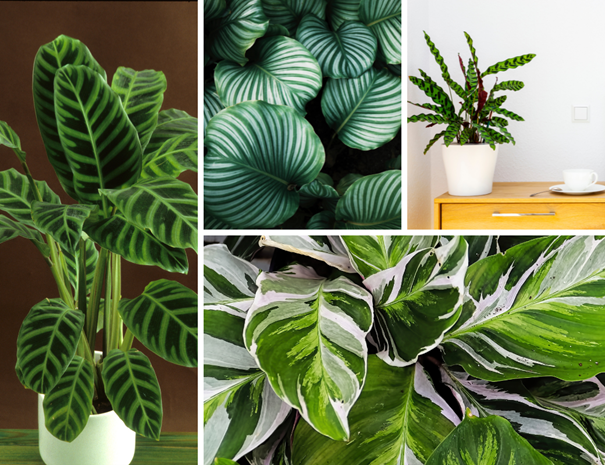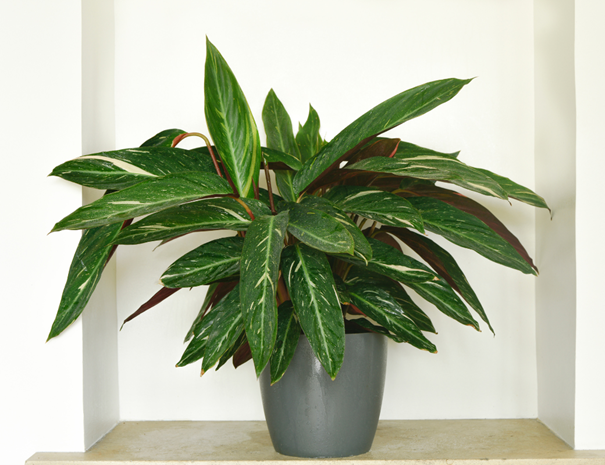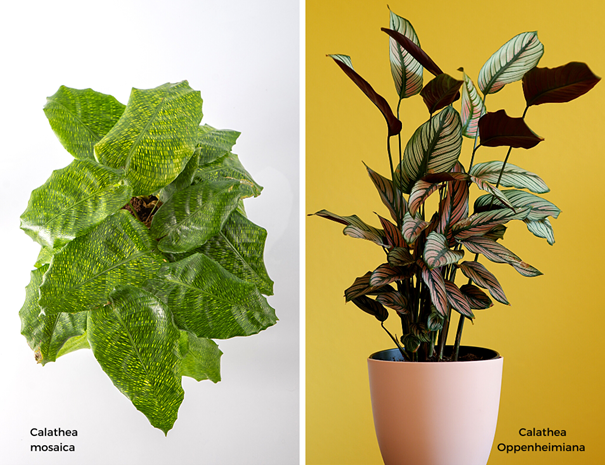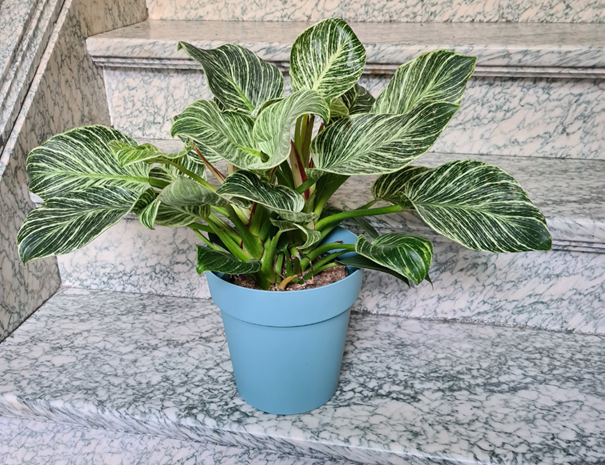Calathea, with its spectacular patterns and vivid colors, is a houseplant that evokes the exoticism of tropical forests. Whether you're a novice or a seasoned gardener, here's how to look after this green jewel so that it lights up your home.
Native to the forests of South America, particularly Brazil, Calathea belongs to the Marantaceae family. It is admired for its oval leaves adorned with fascinating patterns, earning it the nickname "peacock plant".
Calathea specificities
- Leaves: Calathea is renowned for its broad, vibrant leaves with patterns ranging from dark green to pale pink. These patterns can vary considerably depending on the species.

- Movement: A unique feature of Calathea is its ability to "sleep". At night, you may notice that the leaves rise, adopting an upright position.
- Flowers: Although less common, some Calathea species produce flowers, usually in the form of small spikes.
Where to place your calathea ?
Calathea plants prefer indirect light. Avoid placing them in direct sunlight, as this can discolor their leaves. A bright room without direct sunlight is ideal.
How to care for your calathea?
☀ Light & temperature
Calathea likes indirect light and can even tolerate low light levels. Avoid direct sunlight. A temperature between 18°C and 23°C is ideal for this tropical plant. Protect it from cold draughts.
💧 Water and feed
Calathea prefers soil that is constantly moist, but not soggy. Use room-temperature water and avoid hard water. During the growing season, feed your plant every month with a liquid houseplant fertilizer.

🦟 Diseases, pests and parasites
Watch out for spider mites and mealybugs, which can attack your Calathea. Keep an eye on the leaves for the first signs of infestation.
🗑 Potting and cuttings
We recommend repotting your Calathea every two years, preferably in spring. This plant can be multiplied by division during repotting.
Some calathea varieties
There are many species of Calathea, each with its own patterns and colors. Here are a few examples:
- Calathea oppenheimiana: known as the peacock plant, this variety has pretty, colorfully patterned leaves.
- Calathéa mosaicca: here, light and dark greens blend like an impressionist painting in a refined mosaic.

- Calathéa orbifolia: variety has large round leaves with dark green and silver markings.
- Calathéa roseopicta: known as "Calathéa medallion", this variety has dark green leaves with pink and white markings.
- Calathea lancifolia: variety with narrow, elongated leaves with light green and purple markings.
- Calathéa zebrina: variety known for its purple zebra stripes.
Conclusion:
Thanks to its impressive graphic patterns, calathea is a charming addition to any interior. It even tolerates light shade. By following our care tips, you'll keep this tropical plant healthy and add a modern touch to your decor.

Cover Photo : calathea in GID pot